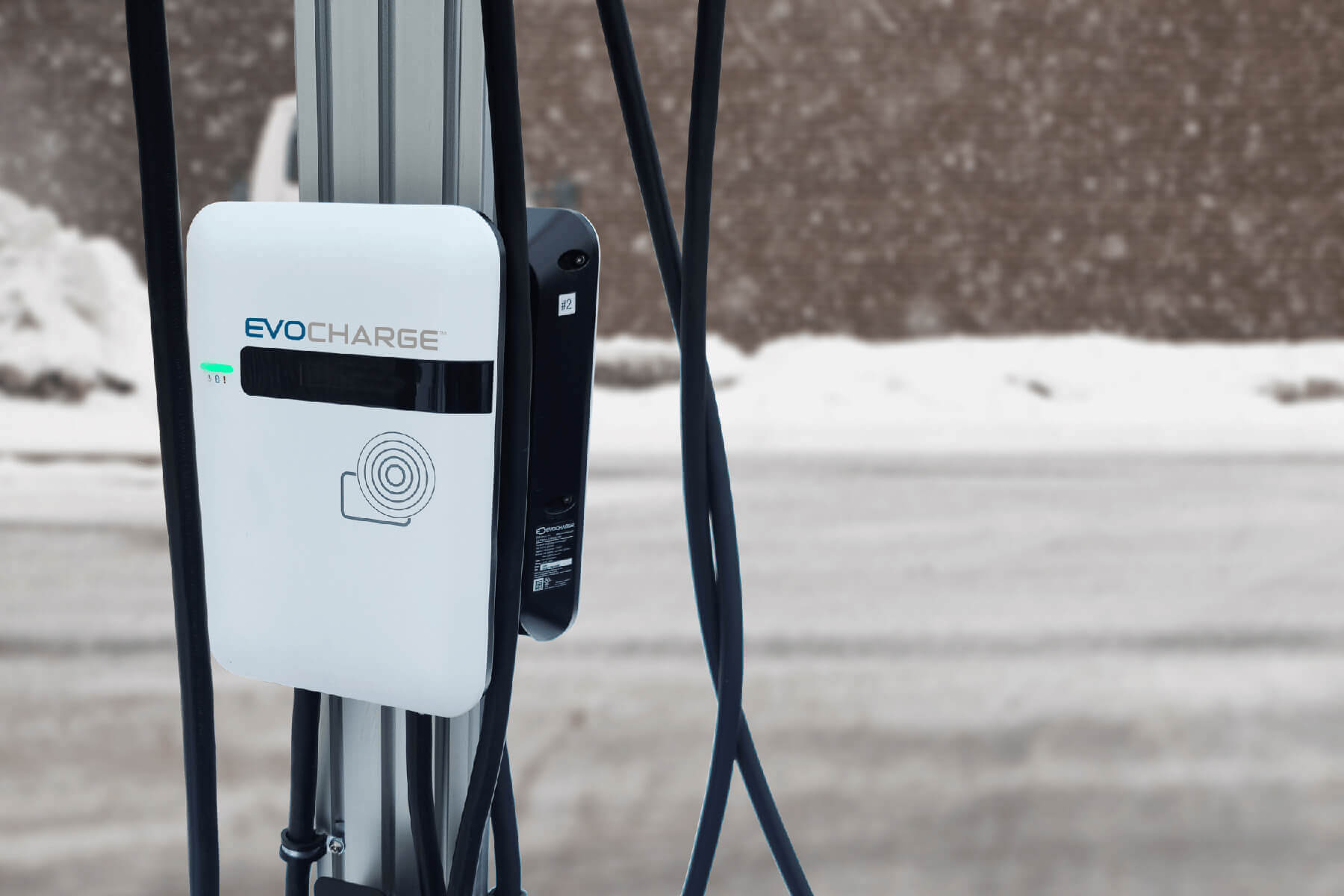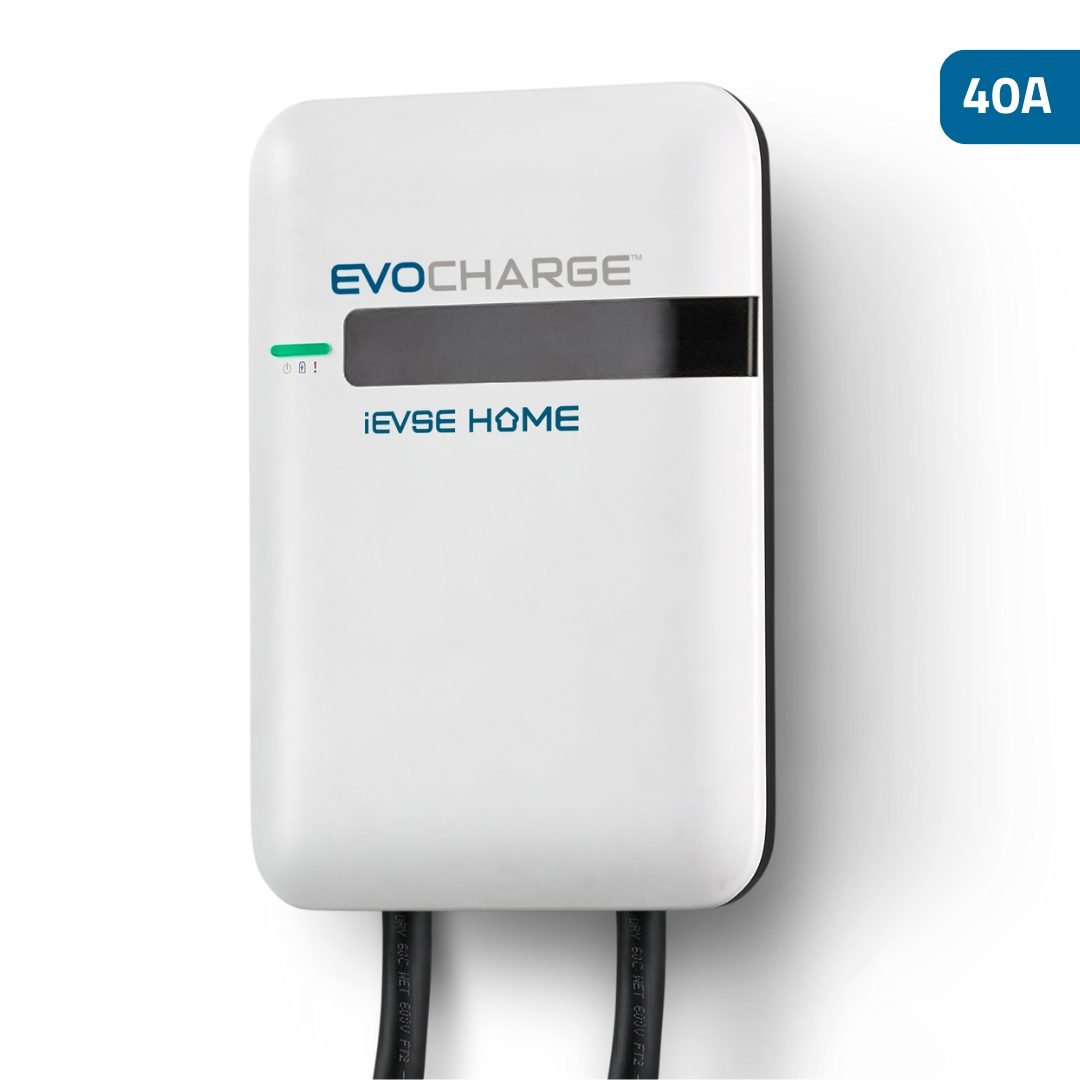As electric vehicles (EV) continue to gain popularity, many in North America have to ask: Can an EV charger be installed outdoors in climates that reach subzero temperatures? And how do electric cars work in cold climates? Especially as climate change causes winters to become colder across Canada and the U.S., and major cold weather events occurring even in places like Texas in recent years, being concerned about how an electric car will be able to charge in subzero temperatures is rational when considering replacing gas-powered vehicles with electric.
Installing an EV Charger Outdoors in Cold Climates
While homeowners may choose to install their EV charger outdoors or in an uninsulated garage where cold weather can affect it, for many commercial uses, the EV charger can only be installed outside in a parking lot or beside a building. For those living in cold-weather climates, electric vehicle charging stations can still be installed outside, but there are a few things to note: in particular, is the charger you’re considering NEMA 4-rated?
What Is a NEMA Rating and What Is it For?
NEMA—the National Electric Manufacturers Association—was formed in 1926 to set standards for companies that produce electrical products, equipment and wiring. These standards were developed to help consumers better understand their products.
Today, a NEMA enclosure rating is “a standard rating system that defines the types of environments in which an electrical enclosure can be used, and frequently signifies a fixed enclosure’s ability to withstand certain environmental conditions.”1
A NEMA 4-rated product—such as EvoCharge’s Home 50, iEVSE, and iEVSE Plus chargers—fulfills the following criteria:
- Provides a degree of protection to personnel against access to hazardous parts, whether used indoors or outdoors
- Provides a degree of protection for the internal equipment against solid foreign objects, like dirt and windblown dust
- Provides a degree of protection for the internal equipment against the harmful effects of rain, sleet, snow, splashing water, and hose-directed water
- Offers protection against external formation of ice on the enclosure
A NEMA 4-rated product is enclosed in such a way that the internal parts of the product—in this case, an EV charger—are protected from the elements and able to work normally from -22℉ to 122℉ (-30℃ to 50℃). Exposure to extreme temperatures outside of this range may decrease the functionality of the product.
How Do Electric Cars Perform in Cold Weather?
While a NEMA 4-rated EV charger can withstand cold climates, how do electric cars perform in cold weather? The truth is, no vehicle—whether electric or gas—runs at peak performance when temperatures fall below freezing. However, because lithium batteries can be negatively affected by cold weather, it’s important to note that there will be a decrease in driving range during cold weather.
Additionally, driving range is impacted when electric vehicles are used in cold weather because more electricity is needed to maintain battery temperature, supply heat to the cabin, run defrosters, and perform other energy-sapping systems like warming your car seats. Consumer Reports stated2 in 2021 that an unplugged EV’s range can decrease by about 20 percent when the temperature drops between 0°-10°F, and it takes longer to recharge than it would in warm weather.
This doesn’t mean an electric vehicle can’t or shouldn’t be used in cold weather. Just like standard vehicle owners need to be more aware of the gas gauge in freezing temperatures, EV owners should be aware of how much electricity they’re using on average and when they should charge up.
There are other ways to mitigate the situation as well. EV owners can decrease their use of the standard heater by dressing warmly, letting the car warm up by starting it up while it is still charged, and using seat warmers. AAA found that electric vehicles only lost an average of 12 percent of range when the heater wasn’t used compared to the 40 percent drop with heater use.3
There’s good news as well for those wondering how electric cars work in cold-weather climates: the batteries being engineered for EVs are consistently getting better and range is increasing every year.
Charging Electric Cars in Cold Weather
For commercial entities looking to install EV chargers on their property, living in cold weather can be an advantage. Because EV owners are more aware of their range and where to find a charger along their daily commute, installing an EV charger will make your business, multi-unit dwelling or location more attractive.
For those looking to improve their EV charging at home, a Level 2 EVSE unit will not only charge faster than the standard Level 1 charger, but cars left plugged-in when not in use are able to maintain their battery temperature, causing less strain on the battery to warm up when first used.
Luckily for you, all of EvoCharge’s EVSE stations and accessories are NEMA 4-rated, so you can rest assured that they’ll be able to withstand cold temperatures, even when installed outside. And with our app-enabled smart iEVSE Home charger, you can schedule charges right from your phone so that it’s ready to go when you are.
For more information about EvoCharge’s EVSE charging stations and accessories, or to purchase for your commercial location, check out our Commercial EV Charging Stations page.

